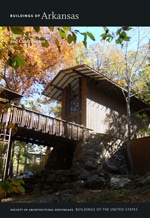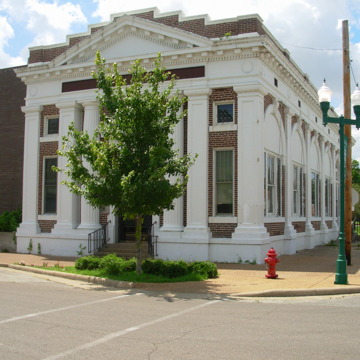This former bank has a richly articulated classical facade with a central entrance flanked in succession by fluted Doric columns and pairs of paneled pilasters separated by narrow windows. A massive dentiled pediment finishes the building. The brick walls of this former bank are barely visible behind all the classical adornments, which in their weightiness give the bank a sense of permanence and security. The bank closed in 1928 and had a succession of uses. Opposite at 207 E. Hale is the former Bank of Osceola (1909), a two-story brown brick building with its second story defined by two large semicircular arches enclosing windows. A tall cornice parapet with brick corbeling finishes the building; the ground story has been altered.
You are here
Historic Planters Bank (Citizens Bank)
If SAH Archipedia has been useful to you, please consider supporting it.
SAH Archipedia tells the story of the United States through its buildings, landscapes, and cities. This freely available resource empowers the public with authoritative knowledge that deepens their understanding and appreciation of the built environment. But the Society of Architectural Historians, which created SAH Archipedia with University of Virginia Press, needs your support to maintain the high-caliber research, writing, photography, cartography, editing, design, and programming that make SAH Archipedia a trusted online resource available to all who value the history of place, heritage tourism, and learning.















